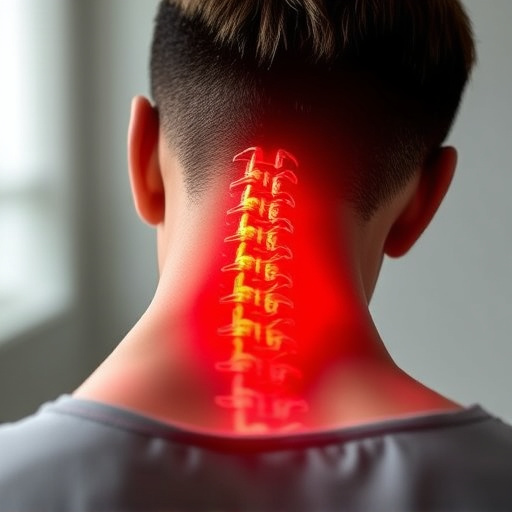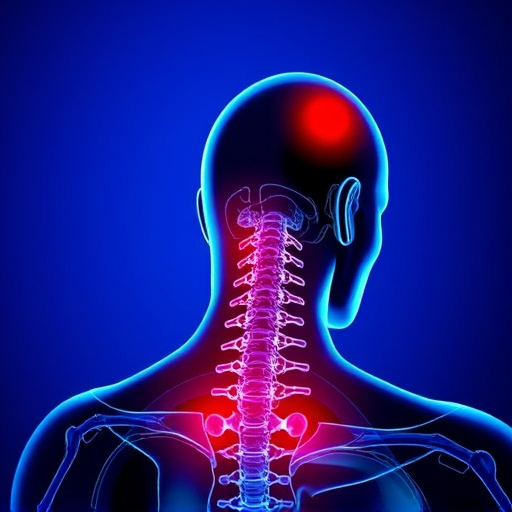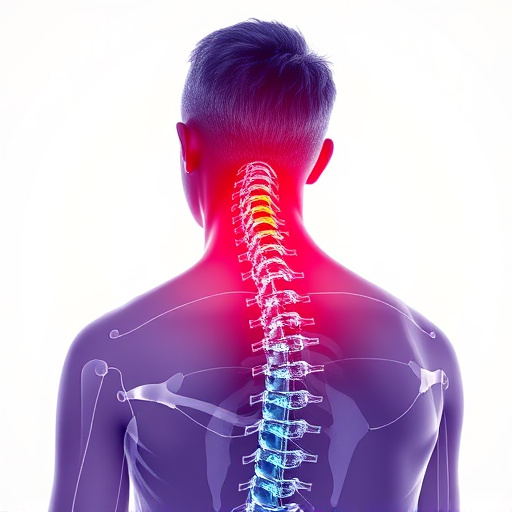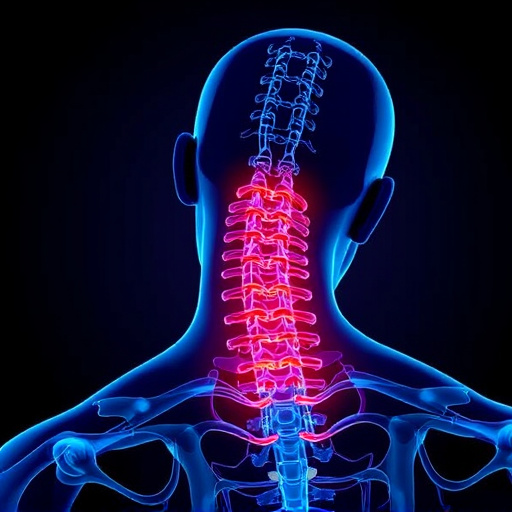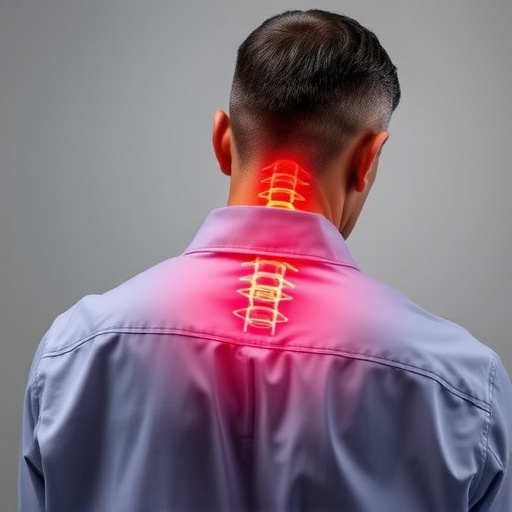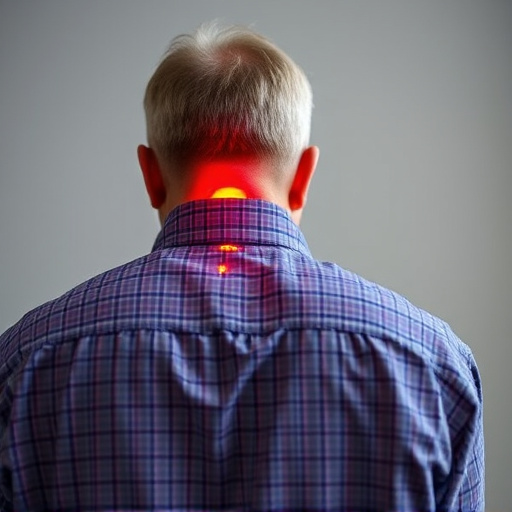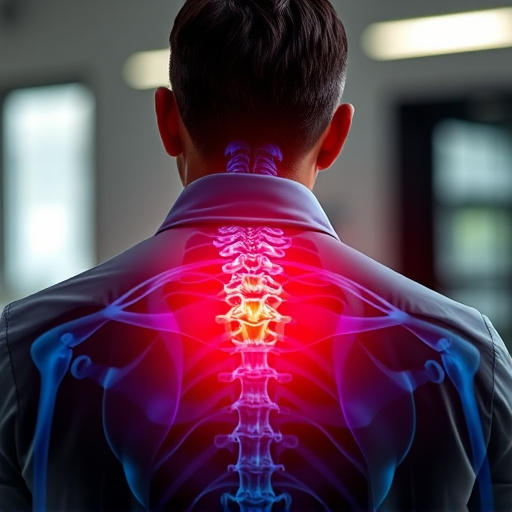Herniated discs, a common spinal issue caused by repetitive tasks or accidents, are significant within workers compensation injury care. This condition triggers support through insurance covering medical expenses and rehabilitation services. Non-surgical treatments like physical therapy, medication, and lifestyle modifications, guided by specialists in workers compensation injury care, effectively alleviate pain and restore function. Physical therapy strengthens muscles, realigns vertebrae, and improves flexibility, while interventional procedures provide localized numbness for significant symptom relief. Lifestyle modifications, such as regular exercise, weight management, and ergonomic practices, further aid healing and return to work. Many patients find lasting relief through these non-invasive methods, leading to improved quality of life and reduced time away from work.
Discover non-surgical treatments for herniated discs, focusing on workers’ compensation injury care. This comprehensive guide explores various options, from physical therapy and interventional pain management to lifestyle adjustments, offering long-term relief. Understand how these approaches can effectively manage disc hernias without invasive surgery. Read on to learn about successful case studies and find a holistic path to recovery tailored for workers’ compensation injuries.
- Understanding Herniated Discs and Workers Compensation Injury Care
- Non-Surgical Treatment Options for Disc Hernias
- Physical Therapy as a Comprehensive Approach
- Interventional Pain Management Techniques
- Lifestyle Adjustments for Long-Term Relief
- Case Studies: Success Stories in Non-Surgical Care
Understanding Herniated Discs and Workers Compensation Injury Care

Herniated discs, a common spinal issue, occur when the soft, cushioning material between vertebrae slips or protrudes, potentially pressing on nearby nerves. This condition can lead to pain, numbness, or weakness in various parts of the body depending on the affected area. For workers with injuries resulting from repetitive tasks or sudden accidents, understanding this condition is crucial within the context of workers compensation injury care.
Workers compensation insurance provides support for employees injured on the job, covering medical expenses and offering rehabilitation services. When a herniated disc is involved, appropriate treatment plans are designed to alleviate pain, promote healing, and restore function. Non-surgical approaches, often recommended, include physical therapy, medication, and lifestyle modifications, tailored to each individual’s needs under the guidance of healthcare professionals specializing in workers compensation injury care.
Non-Surgical Treatment Options for Disc Hernias

Non-surgical treatment options are often the first line of defence for individuals suffering from a herniated disc, especially in cases where surgery is not recommended or desired. These treatments focus on alleviating pain and improving function without invasive procedures. One common approach is physical therapy, which involves targeted exercises designed to strengthen the back muscles and improve posture. This can help stabilize the spine and reduce pressure on the affected disc. Additionally, therapists may employ techniques like heat and ice therapy, electrical stimulation, and massage to relieve discomfort and promote healing.
Another effective method for managing herniated discs is spinal manipulation, typically performed by chiropractors or osteopaths. Adjustments to the spine can help realign misaligned vertebrae and reduce nerve compression. Additionally, workers compensation injury care often includes prescription medications, such as pain relievers and anti-inflammatory drugs, to manage symptoms. In some cases, interventional procedures like epidural injections may be considered to numb affected areas and provide significant relief.
Physical Therapy as a Comprehensive Approach

Physical therapy is often a cornerstone in the comprehensive approach to treating herniated discs, especially when it comes to workers’ compensation injury care. This holistic treatment method focuses on improving strength and flexibility around the affected area, reducing pain, and restoring mobility. Therapists employ various techniques such as manual manipulation, exercise prescription, and modality applications (like heat or ice) to tailor a specific program for each patient’s needs.
In the context of workers’ compensation injuries, physical therapy plays a significant role in helping individuals return to their regular routines and jobs safely. By addressing the underlying causes of disc herniation and strengthening supporting muscles, physical therapy can significantly reduce the risk of recurrence. This not only speeds up recovery but also ensures that employees can resume work with enhanced productivity and confidence.
Interventional Pain Management Techniques

Interventional pain management techniques offer a non-surgical approach to treating herniated discs, providing relief for those suffering from work-related injuries. These advanced procedures are designed to target specific areas of pain and inflammation associated with disc hernias. By utilizing specialized injections, interventional pain specialists can effectively reduce discomfort and improve mobility. This is particularly beneficial for workers compensation injury care, as it allows individuals to regain control over their daily activities without the need for invasive surgeries.
With a focus on minimizing intervention, these techniques are tailored to individual needs, offering a range of options from epidural steroid injections to nerve blocks. Such interventions not only alleviate acute pain but also provide long-term management strategies, ensuring patients can return to their regular routines safely and efficiently.
Lifestyle Adjustments for Long-Term Relief

Many people suffering from a herniated disc seek long-term relief through lifestyle adjustments, especially after workers’ compensation injury care. This involves adopting a series of healthy habits to reduce pressure on the spine and support overall back health. Regular exercise, including strengthening exercises for the core muscles, can significantly improve posture and stability, easing the strain on affected discs. Maintaining a healthy weight is also crucial, as excess weight puts additional stress on the spine, exacerbating disc problems.
Additionally, modifying daily activities to avoid heavy lifting or repetitive motions can prevent further damage. Ergonomic work stations and proper lifting techniques are essential for workers’ compensation injury care patients to minimize strain during work hours. Adequate rest and good sleep hygiene are also vital, as proper rest allows the body to heal and reduces morning stiffness and pain.
Case Studies: Success Stories in Non-Surgical Care

Many patients with herniated discs turn to non-surgical treatment as a preferred path for recovery, especially in cases related to workers’ compensation injuries. These success stories highlight the effectiveness of non-invasive approaches in managing disc-related pain and disabilities. Case studies often showcase individuals who have successfully navigated their hernias without undergoing surgery, leading to improved quality of life and reduced time away from work.
One such example involves a construction worker who suffered a herniated disc while on the job. Through a combination of physical therapy, targeted exercises, and medication management, he was able to reduce his pain significantly. With tailored care, he regained strength and mobility, enabling him to return to work within a few months, proving that non-surgical treatment can be highly successful in certain cases, especially when aligned with workers’ compensation injury care protocols.








